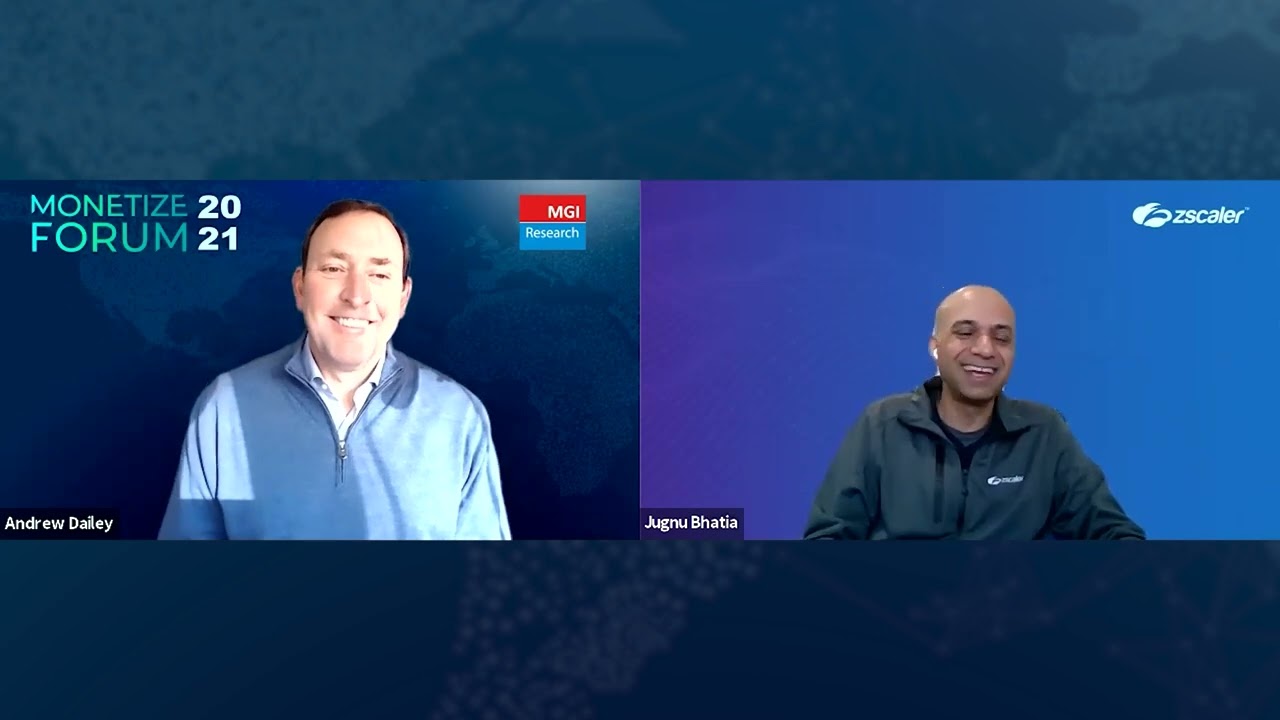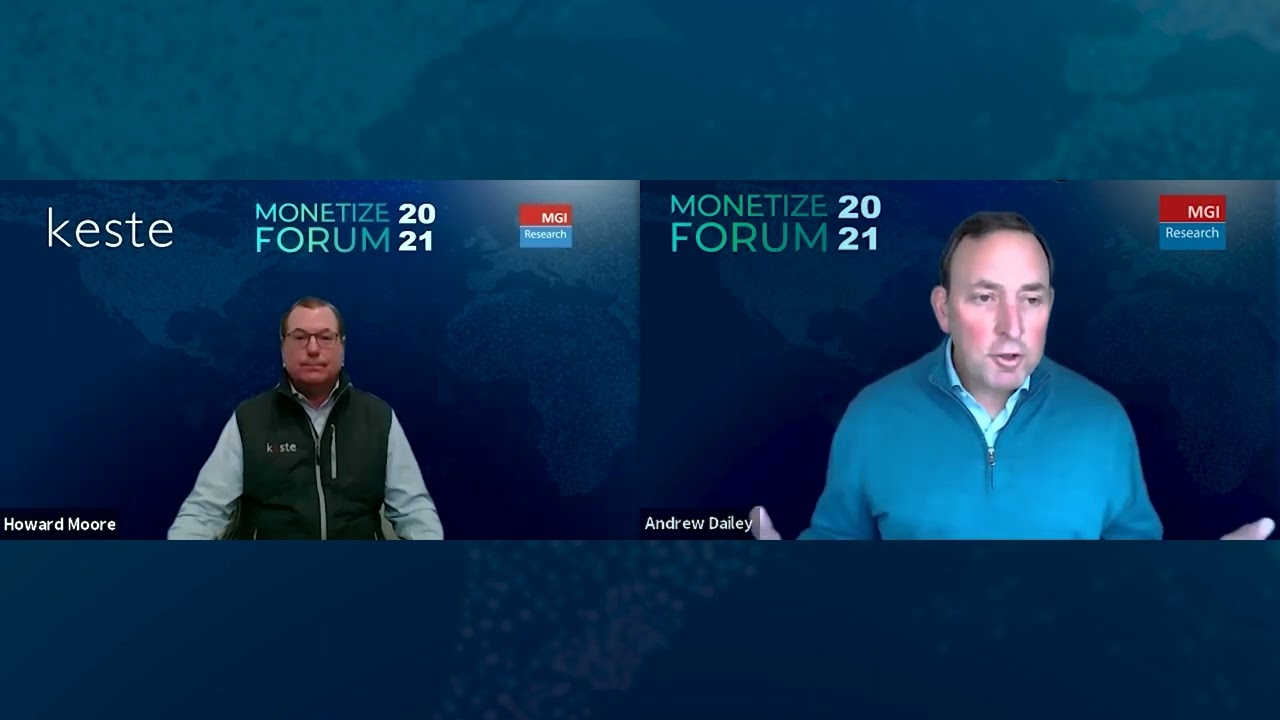Revenue recognition is traditionally relegated to the end of the monetization cycle where it cannot bring maximum impact to a company’s understanding of its health and its relationship with its customers. Restructuring established financial practices can be uncomfortable, but it’s a necessary move for companies looking to scale in this time of increasing product, service, and billing complexity. MGI Research analyst Andrew Dailey spoke with BillingPlatform’s CFO Brad Sawaya at the 2021 Monetize Forum to get his honed perspective on how businesses should challenge their existing processes, systems, and mindsets around revenue recognition.
Key Issues
What are the common challenges around rev rec?
How can bringing rev rec to the front of a monetization strategy benefit the whole system?
How do companies optimize the relationship between product and finance teams?
Guest Profile
Brad started his career with Ernst & Young. Since then, he has held leadership positions in Controllership and Finance with VMware, EMC2, and General Electric. Most recently, Brad was the Director of Business Operations for Predix.io, a GE platform. Brad is a CPA and has extensive experience helping both SaaS companies to scale and traditional companies to undergo digital transformations.
Andrew Dailey
Welcome, everyone. This is Andrew Dailey of MGI, and our session is “A SaaS CFO’s Perspective on Revenue Recognition.” Every business is becoming a software business. With more and more companies adopting as-a-service business models, the sales, finance, and operational infrastructure necessary to support that mix of products and services (digital, physical, and hybrid) increases in complexity. Within the finance function, revenue accounting, as we all learned in the process of going through ASC 606, can no longer be handled through the use of Excel and by increasing headcount. The only way to scale the finance team today is through automation. We’ve had a number of sessions on rev rec, and to provide a CFO’s point of view on the practical challenges of revenue accounting and trying to scale a finance team, I’m now joined by Brad Sawaya, the CFO of BillingPlatform. Welcome, Brad, to the Monetize Forum.
Brad Sawaya
Thanks, Andrew. Thanks for having me. I’m excited to be here.
Andrew Dailey
Yes, it’s your first time on stage at the Forum! So, you’ve worked inside the finance function of a very large enterprise that has one of the most famous finance functions—a little two letter company called GE. You’ve also worked within hardware and software companies of different sizes. To start, in your experience, what are the common challenges when it comes to revenue recognition?
Brad Sawaya
Sure. When I think of areas that companies struggle with around rev rec, I think about three different areas: timing, attribution, and accounting. The first challenge is how to record revenue, the right amount of revenue, and in the right accounting period. Virtually all organizations struggle with this. For SaaS companies that are looking to scale, they’re trying to figure out how to automate the accounting timing as their product and different offerings increase in complexity and as their business matures. The problem is finding a scalable solution and figuring out how to keep the wheels from coming off the cart.
For traditional companies, that timing piece hasn’t always been a problem. When you’re selling widgets, the revenue accounting is relatively straightforward. However, like you said, you’re now more than ever before seeing these traditional companies introducing recurring revenue streams. These new offerings require a different approach to rev rec. When you introduce them as a subscription or a usage-based deal into an environment that’s been built for selling widgets, the system cannot automate the new offerings. That’s their problem.
The second problem is around revenue attribution. Once you know what amount to recognize in what accounting period, the next question is: who gets credit? Any enterprise with multiple legal entities or profit centers needs to attribute that revenue to certain buckets. That’s the part that many people forget about. It’s not just about how much to recognize on the consolidated financial statements but also about who gets what from a compliance standpoint as a legal entity or the IP owner. This is where intercompany transactions can become a big problem. It’s also something to look at from a profit center standpoint and as internal management of the business.
The third issue is the accounting, by which I mean the technical revenue account. This is not applicable to all companies. For some companies, simply getting the right amount and the right accounting period for rev rec is the challenge. However, for companies with product offerings or go-to-market strategies that are sufficiently complex or companies that need to decouple a bundle and record the revenue differently than how it was invoiced, this becomes very difficult to automate. Previously, the accounting world had very stringent rules on how to do this. Sometimes you would hear them termed as VSOE or something else, but in some regards, ASC 606 simplifies things and provides a consistent framework. This is good. This provides further justification for automating the cycle, though operationally, it’s still difficult to automate.
Andrew Dailey
We all know that regarding business models, pricing plans, and offers, sales reps are going to want more flexibility in terms of what they can create and customize for the customer, especially coming through what is, hopefully, the end of this pandemic. There’s going to be an increase in complexity. From a revenue scheduling point of view, is the best way to address this through a standalone tool or single platform? Should we be doing it through our financials package, through a subledger to the GL? In your experience, what method and tool are best to address this?
Brad Sawaya
That is a good question. While nobody wants a million different systems to manage, there are certain things you just can’t settle on. When it comes to driving more revenue to the business, finance and the revenue accounting piece should never be a bottleneck to product innovation. This is something that keeps CFOs up at night. On the one hand, the CFO’s job and the finance function are to manage and provide support to the rest of the business in setting and managing budgets, in cloning the organization, and in providing the strategic direction. But on the other hand, they need to make sure their own house is in order. The second a new product comes off the line and is ready to ship, they need to be ready to account for that. In today’s world, these offerings can be ready for production with the flip of a switch.
We can no longer live in the world where you need to submit a ticket to IT in order to be then ready to record that revenue in three, six, or nine months. That just doesn’t work anymore. Because of that, I’m an advocate of having rev rec in an agile system. More often than not, this means that rev rec sits outside of the ERP or GL. If you think about the different components of the GL, you have financial statement rollups, procurement cycles, the expenses, fixed assets, and so on. Not much has changed with those cycles over time. Those systems generally work. However, when it comes to the revenue cycles, much has changed, and they’re constantly evolving as the product offerings are evolving and the business is trying to stay ahead of the market.
So, this is a change, and it makes a lot of controllers feel uncomfortable. The thought of doing rev rec outside of the GL can be a foreign concept. That’s why I’m quick to add that I’m not advocating for a different system for every single component in your quote-to-cash cycle. Nobody wants that, but billing and rev rec are very much intertwined. In my opinion, the ideal solution is an agile platform that can handle both, bring it all together in one solution, and then feed the GL whatever it needs.
Andrew Dailey
Got it. At the root, a lot of what you’re describing is that automated rev rec is really a data challenge, and the essential data elements—price, quantity, payment terms—are contained within a quote. That data gets copied into a contract which then flows into, as you described, various transactional systems, systems of record. Then the data changes, right? The customer decides they want to increase or decrease the service level. Prepaid credits get reassigned, and so on. There are also the cases where it would be really helpful or useful from a finance point of view to know what the potential bookings and recognizable revenue are before the quote is generated. So, rather than thinking of rev rec functionality in isolation, shouldn’t revenue scheduling, attribution, and automation really be part of that broader platform?
Brad Sawaya
Yes, I think you’re right. This is the classic mistake of rev rec being an afterthought. It gets pushed to the bottom of the cycle and is seen as what happens at the very end as an outcome to everything else. That’s a classic mistake. You see it time and time again. If we invert that for a second and start with the rev rec and then trickle it through, it brings to focus something that all organizations struggle with—the bridge between rev rec (the actual amount of the revenue recorded) and how a business is actually doing.
In a perfect world, US GAAP or IFRS financial statements would tell the whole story, but that never happens. That’s why you always have non-GAAP metrics and increasingly, more now than ever, SaaS metrics in public filings—and those are just the public-facing numbers. But internally every month, finance teams are pushing to describe what’s happening in the business, and that ultimately starts and ends with data. These recurring business models are so tied to and intertangled with the customer that they have to know what’s going on with the customer at all times in order to know the health of the business. Oftentimes, those data points sit outside of rev rec. If you think about a flat rate subscription with a usage component, the customer’s usage may not hit overages until the second year. So, for the entire first year, the revenue would indicate that the customer’s health is good.
Without data on the customer usage, you may miss the point that that customer is not using the product and is a churn risk or that, on the other hand, they’re accelerating usage and are ready for a mid-subscription upgrade. So, I agree, the revenue schedules should be part of a broader monetization strategy. If companies can successfully do that, that’s going to give CFOs and others what they need and set the foundation to not only automate the rev rec but also give the complementary information that they need to manage the health of the business and make strategic decisions proactively.
Andrew Dailey
Yes. In your career, you’ve seen a couple of very interesting examples. In one past life, you were at one of the very early backup as-a-service software companies. You also worked on the finance team inside of an organization that was trying to sell based on outcomes, which brings its own set of challenges in trying to align prepaid and postpaid models. What you were just talking about, though, is really the challenge of how you coordinate between finance, product, and the sales team. How do you get that coordination to take place to be able to, as you said, invert the revenue recognition process? How do you go from it being an after-the-fact event to something that’s what we describe as revenue intelligence?
Brad Sawaya
That’s a good way to put it and a good question. I think the biggest challenge around that is operationalizing two very different perspectives. On the one hand, you have the product team whose job is to be creative and innovative. On the other hand, you have finance, which is to some degree the complete opposite. Creative accounting, that’s…
Andrew Dailey
That’s usually a recipe for disaster.
Brad Sawaya
It has landed a lot of people in trouble, right?
Andrew Dailey
Right.
Brad Sawaya
So, they need a strong control environment, and they need to keep track of compliance and budgets. Bringing these two different perspectives together can truly be a challenge. Sometimes, finance and controllership teams are so accustomed to saying no. Sometimes, the product teams don’t take into consideration the downstream implications of creating (in an effort to sell) a deviation from the product offering, and they create practically every single deviation you could imagine. The next thing you know, you have thousands of lines in the product catalog of different variations that are really not all that different from each other. I’ve seen it get to the point where the customers aren’t even paying for what they bought because things slip through the cracks in that environment.
But it doesn’t have to be this way. There are organizations that align, and they do bring the innovative attitude all the way through the organization. That method provides what’s needed for both the product and finance teams. The product team can keep revenue recognition in mind and bring controllership and the finance group up in the cycle to let them know what’s going on and get their feedback. And if the finance team can keep that open, innovative attitude and say, “We get it. We’re going to make this work, and here are some parameters,” that goes a long way towards having things run really smoothly. In this way, these two different teams can operate together and drive value to the organization.
Andrew Dailey
Ultimately, there needs to be accountability and ownership of driving organizational change; you have to have someone leading the charge. Should that be the CFO, the chief accounting officer, or someone else from finance? Should that be someone from product or sales? Who should lead that organizational change?
Brad Sawaya
That’s a great question, and I really do think every organization is different. I do think the CFO has to be involved; oftentimes, the CFO is the glue that brings us all together. If you have IT involved, I don’t think they’re necessarily in charge or the ones that take ownership of the system, but they can also help be the glue that brings these different functions together. If they can do that in the right way, they can be extremely helpful. I’ve seen it in different areas where you have the product team involved, and even on the product team, there may be somebody with an accounting background. That can be helpful if it’s needed in that situation. But at the very least, they all need to be aligned and respectful of each other. If the finance and accounting teams own the systems, that can often be really good. And generally speaking, that’s what I see most of the time.
Andrew Dailey
So as a CFO, where do you see opportunities for innovation when it comes to revenue accounting and revenue recognition finance? Where are the new greenfields to really innovate here?
Brad Sawaya
You know, this truly is a greenfield. There are a few systems out there that have come about in, say, the past five to ten years which have really been helpful, but we’ve still got a long way to go. Additionally, as these new systems are rolled out, you’re still faced with an environment that’s so accustomed to doing things in a certain way. There are people, processes, and systems, and we can talk about processes and systems all day long. But if you don’t have the right people behind them, nothing will get done. The systems are getting there. They’re not perfect, but there are some things that we and others have on our product roadmaps to stay ahead of the curve. Quite frankly though, in my opinion, the biggest drag on corporations and enterprises being able to effectively accomplish what we’re going for here is the people—or at least, it can be.
So, when I think about innovations around rev rec, I’d really like to challenge controllers and other finance professionals to think out of the box and consider what’s going to be best for the business to survive in today’s world. These businesses have to be continually evolving, and you want to be on the forefront of that. You don’t want to be somebody that’s being slow and dragging things down. That means you might have to do things differently than how you’ve done them through your entire career. It might mean doing rev rec outside of the GL, like we talked about.
If CFOs can do that, take full ownership, do their research, understand the options that are out there, and not just take whatever systems have been handed to them, I think there could be a really big difference and a big shift in the market today to a more innovative solution around rev rec.
Andrew Dailey
Great. Well, we are at the end of our session, Brad. Thank you very much for your time. I know there’s more information at the BillingPlatform booth, and you’re available for the Q&A later on and through chat. Your details are available on the platform as well. So, thanks again, and thanks everyone for joining us. This concludes our session.
Brad Sawaya
Thanks again for having me, Andrew. It’s been a real pleasure.




